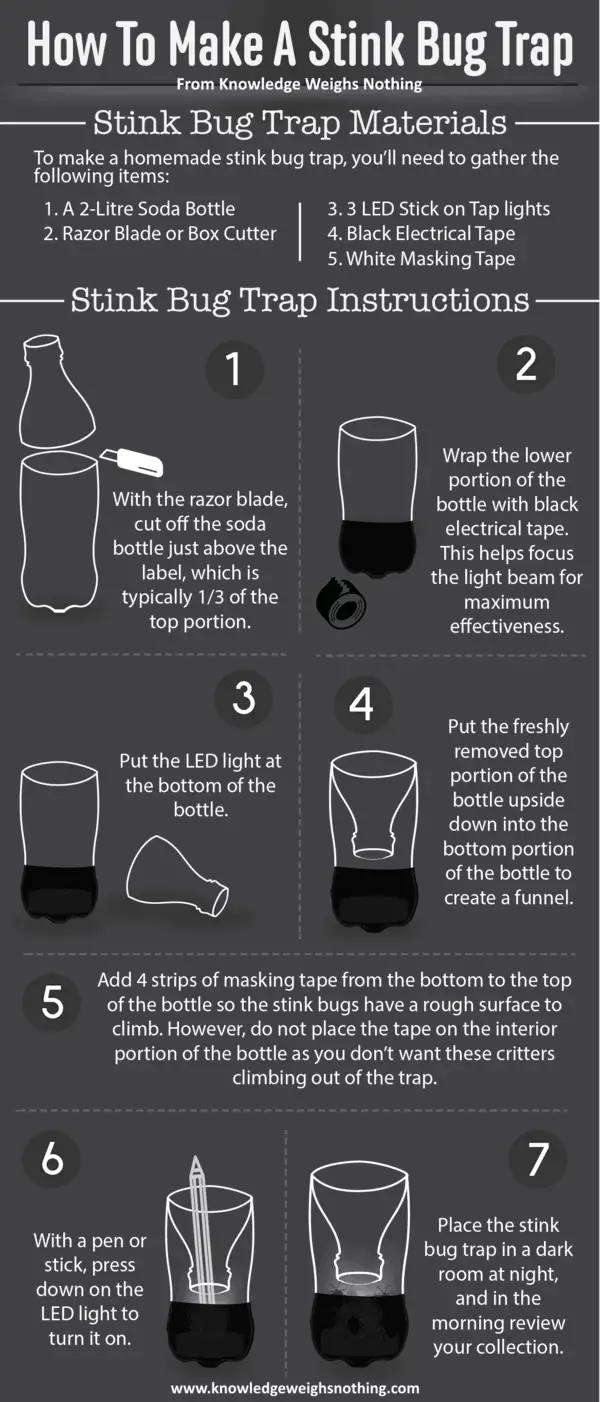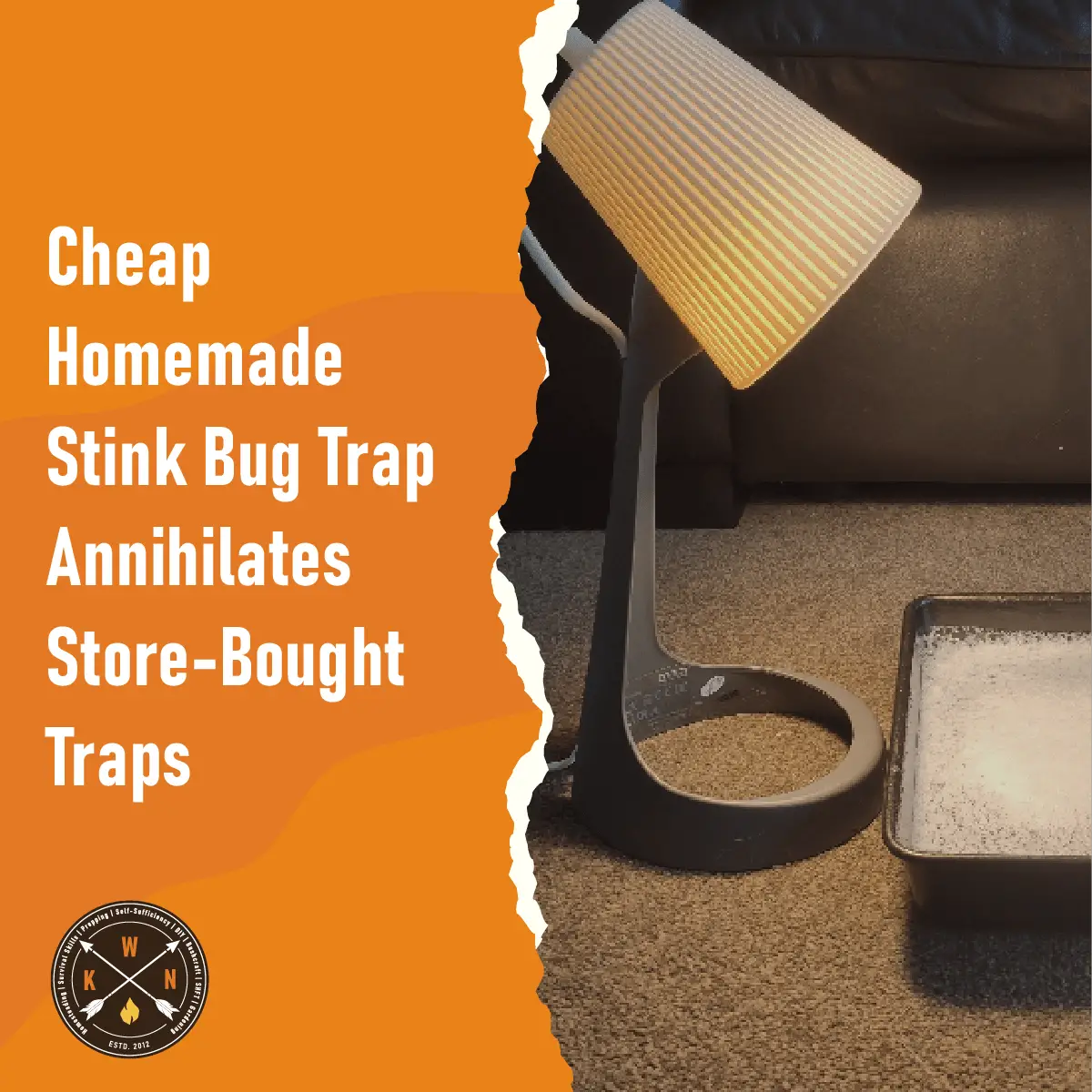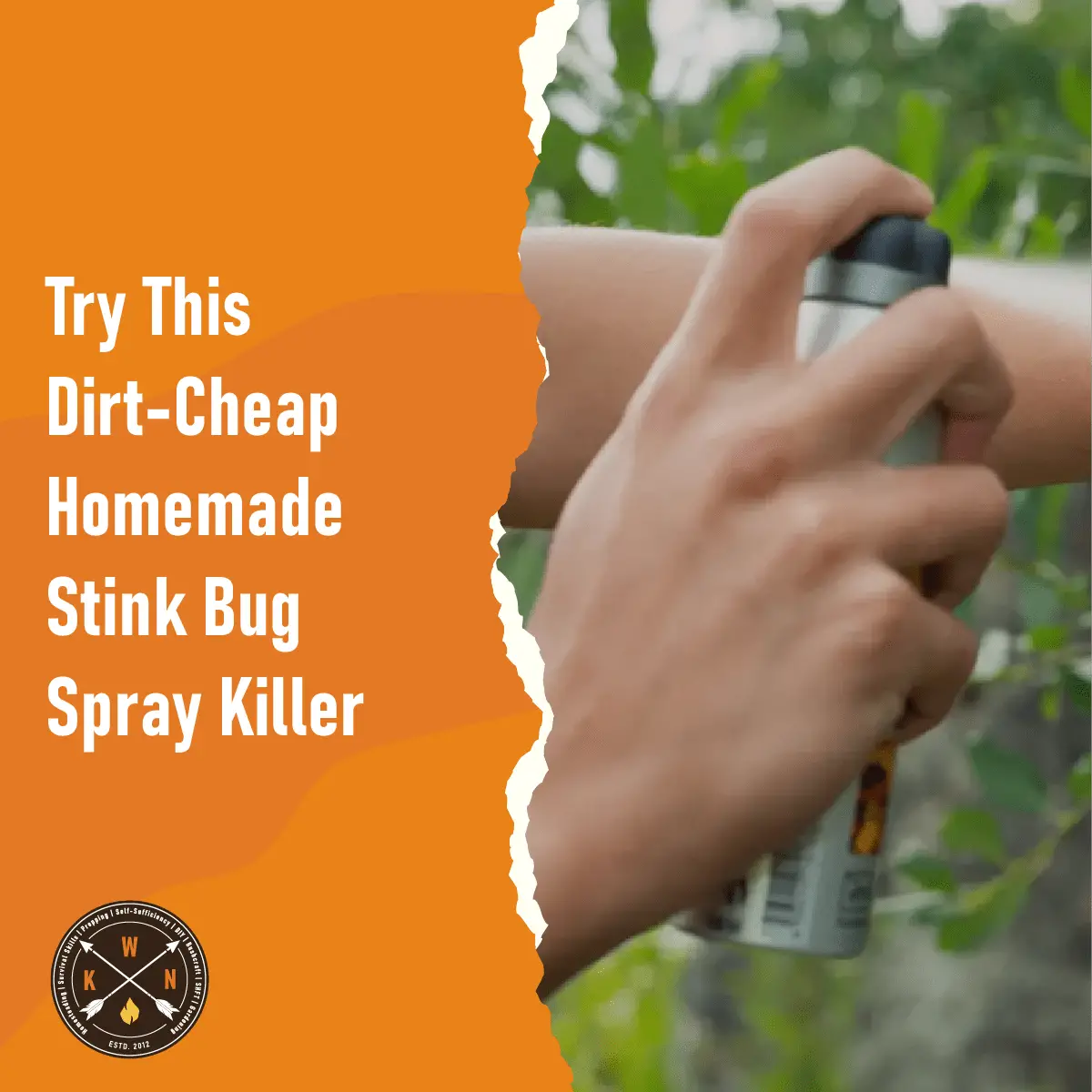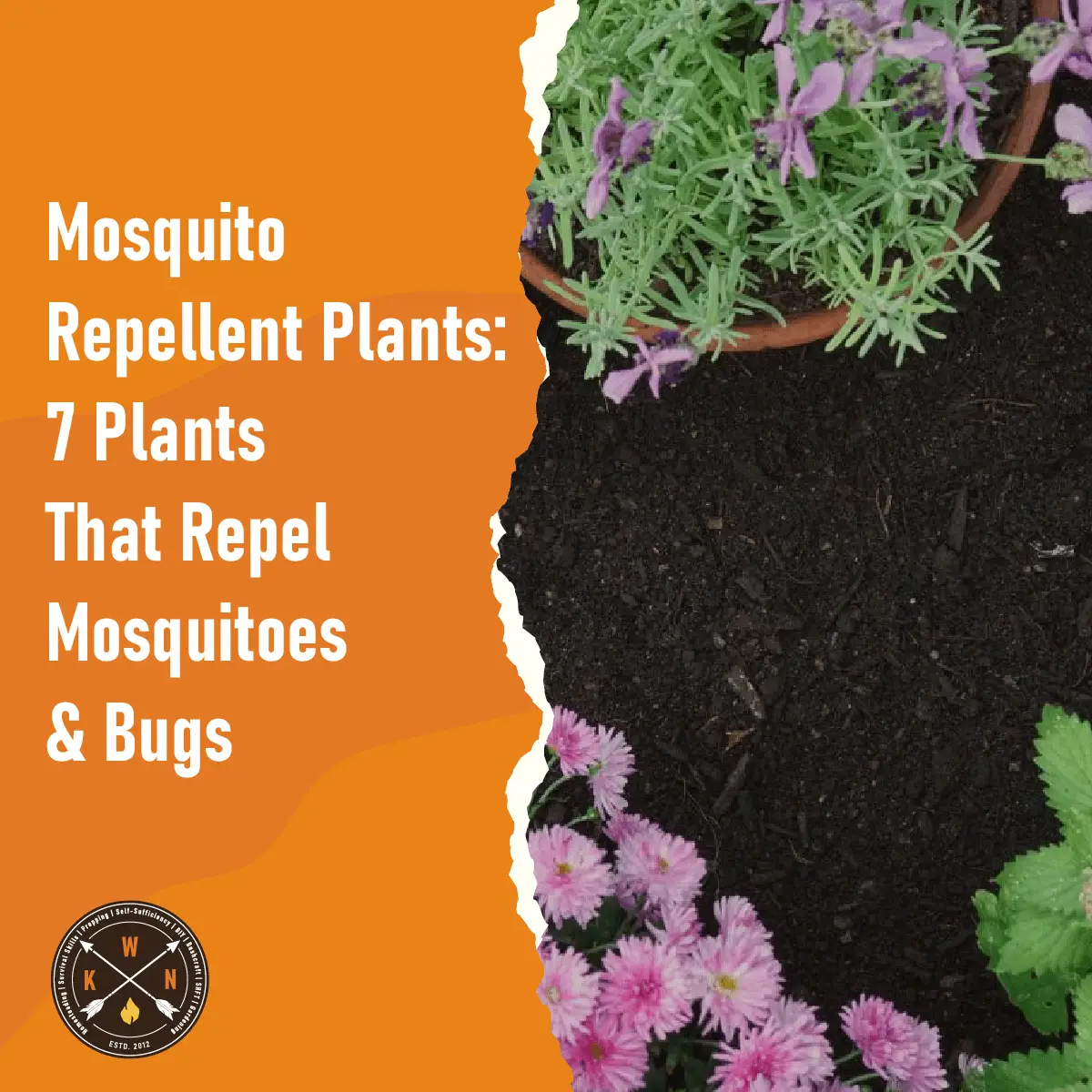A cheap homemade stink bug trap is probably the cheapest, easiest and most environmentally friendly way to deal with these troublesome insects. Although you can purchase pre-made traps, they are usually expensive, poorly made, and some are not all that effective. Luckily, you can easily make a very effective DIY stink bug trap for next to nothing. In fact, you may already have everything you need to make one at home for free!
Below you will find step-by-step instructions on how to make your very own homemade stink bug trap from a 2-litre soda bottle and a small LED light. Additionally, there is an infographic with step-by-step images, and there is also a video tutorial showing how to build a similar DIY trap. Further down, we have also included some additional specific information on stink bugs.
UPDATE: We have now published a new post about a different DIY stink bug trap that was tested via Virginia Tech and found to be way more effective than store-bought traps. This new roasting tray/desk lamp trap may challenge the top spot for the best homemade stink bug trap. Both traps are highly recommended.
We have also published a post on a very cheap and safe homemade stink bug spray that kills stink bugs quickly and is safe to use throughout your home.
Table of Contents
ToggleHow To Make A Homemade Stink Bug Trap
A very simple to build 2-litre soda bottle and LED light stink bug trap.
Trap Materials
To make a homemade stink bug trap, you’ll need to gather the following items:
1 | A 2-Litre Soda Bottle
2 | Razor Blade or Box Cutter
3 | LED Lights (RECOMMENDED: pack of three LED lights on Amazon for around $7)
4 | Black Electrical Tape
5 | White Masking Tape
Step-by-Step Instructions
Step One | With the razor blade cut off the soda bottle just above the label, which is typically 1/3 of the top portion.
Step Two | Wrap the lower portion of the bottle with black electrical tape. This helps focus the light beam for maximum effectiveness.
Step Three | Put the LED light at the bottom of the bottle.
Step Four | Put the freshly removed top portion of the bottle upside down into the bottom portion of the bottle to create a funnel. (See Video for Visual Description)
Step Five | Add 4 strips of masking tape from the bottom to the top of the bottle so the stink bugs have a rough surface to climb. However, do not place the tape on the interior portion of the bottle as you don’t want these critters climbing out of the trap.
Step Six | With a pen or stick, press down on the LED light to turn it on.
Step Seven | Place the DIY stink bug trap in a dark room at night, and in the morning review your collection.
DIY Homemade Stink Bug Trap INFOGRAPHIC
The infographic below again demonstrates visually how to build a homemade 2-litre soda bottle & LED light stink bug trap.
Homemade Stink Bug Trap – DIY Video Tutorial
Stink Bug Prevention is Better than Elimination
Establishing a stink bug trap is essential to catch bugs that are in your home; however, prevention is a key player in overall elimination. According to many pest experts, exclusion is the most important method to keeping stink bugs at bay. Review your home to look for cracks in doors, windows and siding. Make sure to repair damaged screens on windows or doors and seal all unintended openings with high-grade silicone caulk.
Why Is Using A Stink Bug Trap Is Better?
While many pest control companies recommend using pesticides to help control stink bugs, this is not the wisest choice. Although these chemicals can help deter stink bugs from entering your home, should they already exist, insecticidal products can kill stink bugs but then only provide other pests, such as carpet beetles, with a food source. Therefore, these harmful chemicals not only enhance the likelihood of a secondary infestation but also cause extreme harm to the environment.
The cheapest and most effective way to eliminate these pests from your home is by making several homemade stink bug traps and placing them around your home.

What Are Stink Bugs?
Regardless of where you live or what your climate is like, there’s an infestation coming your way – stink bugs, or brown marmorated stink bugs to be exact.
These creatures are not only determined to find their way into your home but as its name suggests, they stink! Let’s take a few moments and learn more about these odorous bugs.
How To Identify Them…
In the most fundamental sense, stink bugs are a member of the Pentatomidae insect family and feature a large, oval (or shield) shape. Its average length is 17 mm and adults typically feature varying shades of brown on both the lower and upper portions of their body. Due to their shield shape, stink bugs feature nearly the same width as their length.
To identify a stink bug, lighter shades of brown form bands around the antennae while darker shades of brown are located on its membranous, as you look toward the rear of their front wings, these two bands seem to overlap. On the head and pronotum of the stink bug, copper or blue-metallic colouration is typically found.
As you may already be well aware, its name is derived from the odour produced from its abdomen and along the underside of its thorax. This odour is the result of a chemical reactions scientists believe is a defensive mechanism. Upon first glance, you may not immediately smell its odour; however, should the bug become startled or feel as if it’s in danger, it will release its strong odour, which can quickly fill a room.
Unlike many other insects found throughout the region, scientists are not sure which seasons are “prime” seasons for the stink bug. However, during the fall and winter months, stink bugs seem to gravitate toward the warmth of a home. This is evident during nighttime when they are drawn to the heat emitted from lights, computer screens and televisions.
Are Stink Bugs Dangerous?
While stink bugs are annoying should they enter your home, they also pose a serious threat to agriculture; both small and large. Stink bugs feed on a wide array of plants; however, they seem to be drawn specifically to fruits, such as peaches, apples, citrus fruits and mulberries. They are also prone to feed on weeds, soybeans, ornamental plants and other human food sources.
Although stink bugs are not a serious threat to humans, some people can develop an allergic reaction to the chemicals found within their odour, which means stink bugs have an aeroallergen tendency. It’s important to note that individuals who crush or smash stink bugs with bare skin may develop an allergic reaction within their skin, because of this, it’s not advised to crush stink bugs, but rather use a stink bug trap. Also, should you crush this stinky creature, its glands produce a vast amount of odorous chemical, which can be quite unpleasant, to say the least.
So there you go – hopefully, you now know a bit more about stink bugs themselves and how to get rid of them using some simple, cheap homemade traps.
Be sure to check out our related post: 6 Mosquito Repellent Plants To Grow






